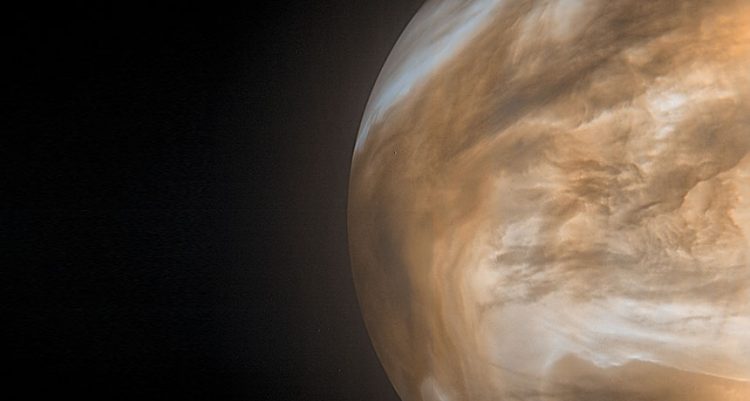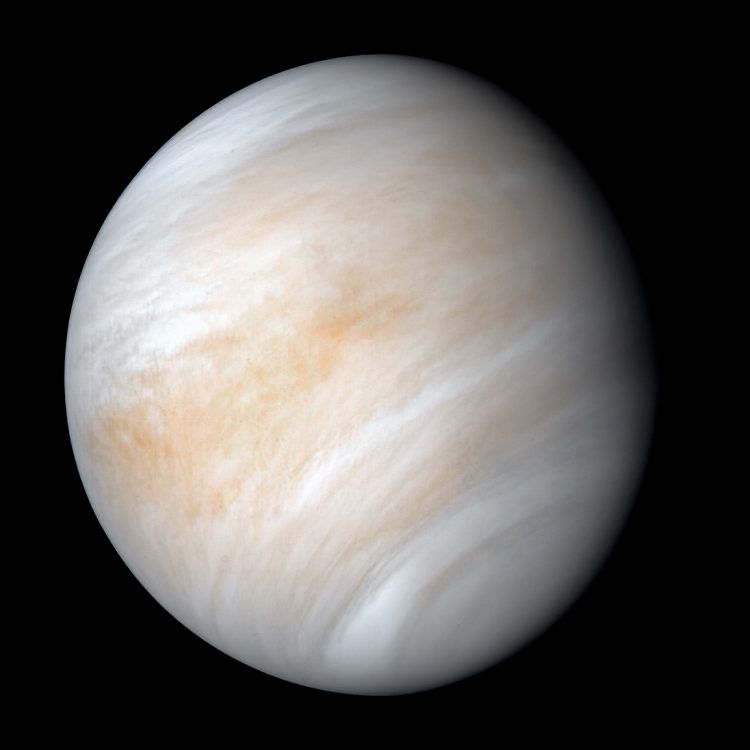What Looked Like Phosphine On Venus Might Actually Just Be Sulfur Dioxide
By Andy Tomaswick
There’s nothing like a good old fashioned science fight. When the discovery being challenged is one of the most public and intriguing of the last year, it’s bound to be even more interesting. A team of scientists, led by Andrew Lincowski and Victoria Meadows at the University of Washington (UW), and involving members from a variety of NASA labs and other universities, has challenged the discovery of phosphine in the atmosphere of Venus that was first announced last year. Their explanation is much simpler: it was most likely sulfur dioxide, one of the most abundant materials already known to be in Venus’ atmosphere.
Their model takes into account two important correction factors to the original study. First was a correction as to the location in Venus’ atmosphere the signal showing phosphine was actually observed. Second was a correction of the total amount of sulfur dioxide present in Venus’ atmosphere at the time the observations were made.

Credit: NASA
The observations used as the basis for the original paper announcing the discovery of phosphine used two data sources, the James Clerk Maxwell Telescope (JCMT) in 2017 and the Atacama Large Millimeter / submillimeter Array (ALMA) in 2019. These are both radio telescopes, and they detect the presence of different materials by monitoring the frequencies at which their signal is absorbed by their observational target. Different frequencies correlate with different materials, so with some fancy math, researchers can differentiate between different materials in their observational target.
Unfortunately, some materials lie very close together in their absorption spectra. Sulfur dioxide and phosphine happen to be two of those materials – both lie very close to 266.94 gigahertz. Originally, the team saw a very large dip in that frequency in the JCMT data, indicating that it was being absorbed by something, but it was unclear whether it was phosphine or sulfur dioxide.
To eliminate sulfur dioxide as a candidate, the team turned to data from ALMA to observe wavelengths where only sulfur dioxide would have an effect. They did find the presence of sulfur dioxide, but not at high enough levels to account for the signal that was observed in the JCMT data a few years prior. Therefore, they concluded that the JCMT signal was caused at least partially by the presence of phosphine.
That finding has already caused plenty of debate within the scientific community. When the UW researchers set out to prove this finding, they noticed something in the JCWT data that the original team appeared to either misinterpret or overlook. The shape of the waveform at the 266.94 GHz indicated that the data the telescope collected was not, in fact, from the cloud layer of Venus as the original team had suggested. Instead it came from Venus’ upper atmosphere, about 50 miles from the planet’s surface.

Image credit: www.jach.hawaii.edu
This distinction is important for a variety of reasons. Most importantly, phosphine is extremely fragile at these high altitudes, as it is much more likely to be destroyed by the radiation present at that height. The UW team calculated that, in order to maintain the levels of phosphine found in the original paper, Venus must be pumping 100 times more phosphine into its atmosphere than Earth pumps oxygen from all the photosynthesis taking place on its surface combined.
Already that looks like an unlikely scenario. However, the UW team found another complicating factor in the original data set. The amount of sulfur dioxide present in Venus’ atmosphere was likely significantly underestimated in the ALMA data.

Credit: ALMA
ALMA has the ability to detect gases almost anywhere on its observational target. While that has some significant advantages, the problem is gases that are more widely distributed, such as sulfur dioxide would be on Venus, actually give off weaker signals than point sources that are concentrated on a specific area.
This effect is called “spectral line dilution”, and it does not affect other telescopes such as the JCMT. UW researchers recalculated the amount of sulfur dioxide originally found in the JCMT data, using adjusted values for the ALMA data to correct for the spectral line dilution, and found that the whole JCMT signal at 299.64 GHz could be accounted for only by sulfur dioxide.

Credit: JAXA
These findings point to a much simpler rationale for the presence of phosphine on Venus – that there actually isn’t any, and it was simply a skewed reading of sulfur dioxide that resulted in the signal that caused so much excitement last year. To the original team’s credit, they asked other scientists to look at their data and validation or invalidate their findings, exactly as the scientific method calls for. That is one of the best things about science fights – they are based on objective fact rather than individualized opinions, and usually personal animosities stay out of the discussion, as they appear to with this dissenting paper.
Outcomes of these disagreements also usually result in an increased understanding of our universe and our place in it, and that certainly seems to be the case here. We also might be able to save millions of dollars further pursuing a phantom signal of a chemical that never existed in the first place. Either way, this is exactly how the scientific method is supposed to work – well done by both the original reporting team and the UW team.
Learn More:
UW: Purported phosphine on Venus more likely to be ordinary sulfur dioxide, new study shows
arXiv: Claimed detection of PH3 in the clouds of Venus is consistent with mesopheric SO2
UT: Maybe Volcanoes Could Explain the Phosphine in Venus’ Atmosphere
NBC: ‘Signs of life’ on Venus might just be ordinary sulfur gas.
Lead Image:
Image of Venus captured by Mariner 10.
Credit: NASA / JPL-Caltech
The post What Looked Like Phosphine On Venus Might Actually Just Be Sulfur Dioxide appeared first on Universe Today.

February 5, 2021 at 09:36AM
via Universe Today read more...

Post a Comment